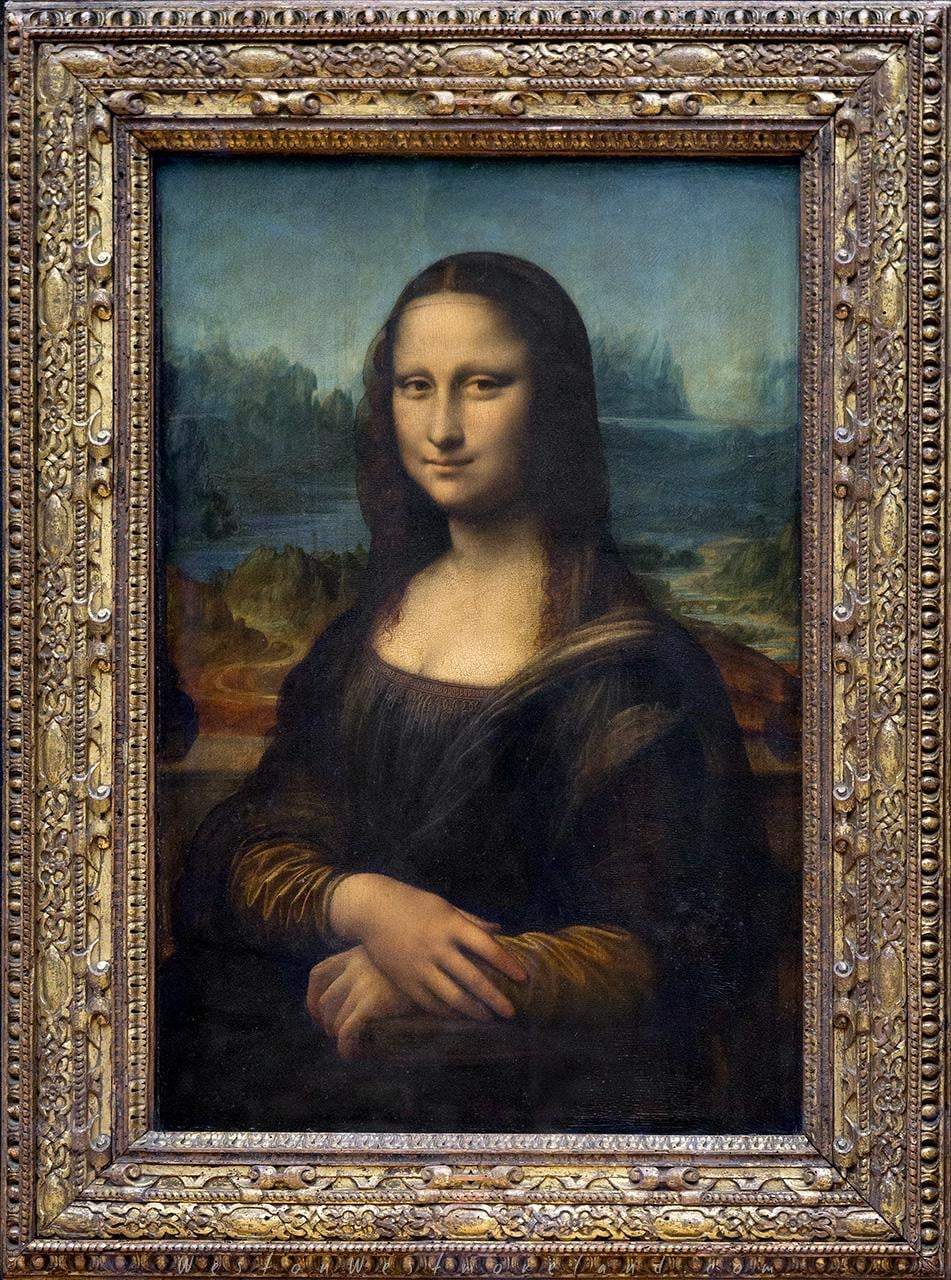
The Mona Lisa, Leonardo Da Vinci, 1505. The woman of the enigmatic smile on its frame as it can be admired at the Louvre Museum in Paris. One of the most iconic paintings ever, the Gioconda is considered an archetypal masterpiece of the Italian Renaissance (restored colors)… [1280×951] [OC]
by WestonWestmoreland

7 Comments
Wow, never seen this obscure piece of art one before. Thanks for sharing.
Needs a clean.
…”The best known, the most visited, the most written about, the most sung about, the most parodied work of art in the world”.
The painting, an oil on a white Lombardy poplar panel, shows the Italian noblewoman Lisa Gherardini, wife of the Florentine silk merchant Francesco del Giocondo – hence her Italian name *La Gioconda* and her French name *La Joconde*. Painted against a distant landscape, she stares out at us with her famously enigmatic smile…but another aspect of the painting that makes it so special is Leonardo da Vinci’s sfumato technique, based on the use of glazes to create a ‘smoky’ effect with subtle contours and contrasts. Leonardo captured the sitter turning towards the viewer in a natural movement that brings the painting to life.
It was believed Da Vinci painted it between 1503 and 1506, although he may have continued working on it as late as 1517. It has been on display at the Louvre since 1797.
Of Leonardo da Vinci’s works, the Mona Lisa is the only portrait whose authenticity has never been seriously questioned. It is believed by some that the Mona Lisa was begun in 1503 or 1504 in Florence. Although the Louvre states that it was “doubtless painted between 1503 and 1506”, art historian Martin Kemp says that there are some difficulties in confirming the dates with certainty. Alessandro Vezzosi believes that the painting is characteristic of Leonardo’s style in the final years of his life, post-1513. Other academics argue that, given the historical documentation, Leonardo would have painted the work from 1513. According to Vasari, “after he had lingered over it four years, he left it unfinished”. In 1516, Leonardo was invited by King Francis I to work at the Clos Lucé near the Château d’Amboise; it is believed that he took the Mona Lisa with him and continued to work on it after he moved to France. Art historian Carmen C. Bambach has concluded that Leonardo probably continued refining the work until 1516 or 1517. Leonardo’s right hand was paralytic c. 1517, which may indicate why he left the Mona Lisa unfinished.
Bought by a French King after Leonardo’s death in 1519, it became the property of the Republic with the French Revolution and has been on display at the Louvre since 1797.
My apologies for inaccuracies and mistakes.
*The color restoration is a personal effort, not an official restoration of any kind.
Frame’s pretty cool, anyone got any info on that?
Angle and positioning of the breasts always looks wrong to me, and the right hand looks unfinished.
Yup, I went there
well, it’s copy in Rome is even better
WHY are there buffoons “colorizing” stuff like this? WT ACTUAL F ?!